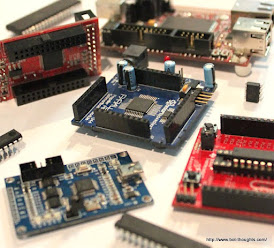
Criteria for Choosing Microcontroller
 |
| Choose Microcontroller |
Hi, Selecting an microcontroller is one of the daunting task even for an experienced developer.
The one of the critical decision of your embedded application is to select the right microcontroller which control the failure and success of your project.
There are thousands of type of microcontroller each of them has unique feature or advantage from form factor or package size ,capacity of random access memory & read only memory that made them fit for certain application and unfit for certain application.
Microchips portfolio for microcontroller is broadest in industry.it includes ARM,PIC & AVR microcontrollers. Primarily experience with one these architecture is valuable and staying with that architecture reduced the development time. They also offer easy to use development environment and development board which reduced research time and cost.
Consideration are important to pick the right part. The common profile of the principal benchmark in selecting a microcontroller is listed here in the order of importance.
1-Does it have a the required number of I/O pins ? like too few pins can not meet the application requirement and too many increases the size of printed circuit board in result excessive development cost.
2-Does it have all the other required peripherals? like enough memory to run the required code ,resolution of analog to digital converter, number of timers and pulse width modules.
3-Does it comes in a 40pin DIP(dual inline package)or a QFP(quad flat package) or some other packaging format? This is critical for development and assembling point of view for the final product.
4-Does it have necessary communication interface? These are peripherals such as USB,I2C,SPI,UART and CAN(control area network).
5-Does the CPU core have the correct throughput? For example, computational power to handle the system requirements over the life of the system for the chosen implementation language? if controller has ability to perform 32 bit operations, it can transfer more data than 8 bit microcontrollers. it based on application requirement, for an 8 bit based embedded application 32 bit microcontroller considered to be excessive resource.
6- Is development support available? like Assemblers, compliers, Evaluation module, In-circuit emulators, debug monitors, online bulletin board service, bug reports Utility software and sample source code.
Friends if you have any other point related to criteria for choosing microcontrollers please comment and for further reading about how to find relevant microcontroller checkout

Comments
Post a Comment